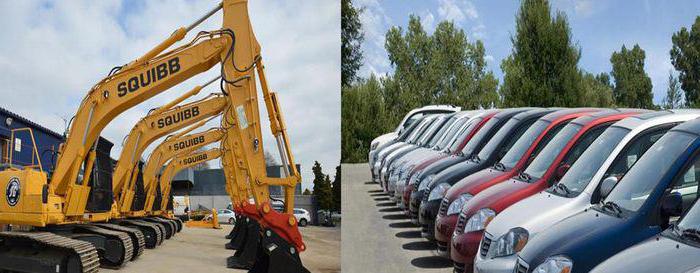Property law has existed since ancient times. It is of great importance for people who participate in relationships related to the circulation of material values. The concept of legislation movable and immovable property. Let's consider these categories in more detail. 
General information
First of all, the concept of the thing itself should be defined. Interpretation of this term can be in three aspects: legal, philosophical and everyday. In the latter case, the thing is called a “separate item”. In a philosophical aspect, it is called an independent, truly existing phenomenon. Many thinkers agree with the opinion that everything that does not have a real being is imaginary and illusory. Accordingly, it cannot be considered as a thing. The legal interpretation of the term is in many ways consistent with the philosophical. However, the interpretation of the definition has several features.
Legal aspect
It must be said that there is no positive legal consolidation of the term “thing” in normative acts. A significant exception to this provision is German civil law. It reinforces the definition of “thing”, presenting it as a material object. In normative acts of the Russian Federation, the term is also not fixed.
Movable and immovable things: specifics of the law
This classification is accepted by most legal systems operating in the world today. However, at the time, such a division was categorically rejected by Soviet legal doctrine. At the beginning of the 20's. of the last century, types of movable and immovable property were considered bourgeois categories and not having practical value. As a result, these terms were not found in regulatory documents until the 90's. After a sufficiently long break, property law was changed. The categories rejected earlier were again introduced into it. Movable and immovable objects were delimited by the law of the RSFSR and the foundations of the Civil Code of 1991. But only in modern civil legislation did this classification receive a relatively complete embodiment. 
Characteristic
Movable and immovable things have existed since ancient Rome. This classification is based on the natural properties of objects. These characteristics carry the differences in which, in fact, material values belong to one or another category. What is the difference between things movable and immovable? A key feature of the latter is their inextricable connection with the land. Moreover, she herself is also considered real estate. The same category includes buildings, perennial plantations, subsoil plots, structures, etc. Here you need to clearly understand the border of separation of movable and immovable things. The same items can belong to one or the second category. However, for example, perennial plantings that are grown in special farms for subsequent transplantation are not considered immovable. Also, constructions used for the construction of a residential building do not belong to this category.
Special items
In some cases, the separation of movable and immovable objects is carried out regardless of communication with the land. In such situations, the distinction is made on a legislative basis. So, for example, real estate includes space objects (orbital stations, ships, artificial satellites, and so on), ships, aircraft, and inland navigation ships. These tangible assets are subject to mandatory state registration. Such objects can not only move in space without prejudice to their purpose, but they are also specially designed for this.Their attribution to real estate is due to their high cost. In this regard, the legislation imposes increased requirements on their civil circulation. 
Enterprises
They are regarded as property complexes and also relate to real estate. Enterprises are used to conduct economic, entrepreneurial and other activities permitted by law. In the composition of such a property complex there are all types of material assets that are used in accordance with the goals of its creation. These include, among other things, land, raw materials, inventory, structures, equipment, buildings, products, debts. The company’s material assets also include rights to means of individualization (brand name, service marks, brands, etc.).
Additionally
Other properties may also apply to real estate. For example, in accordance with the provisions of the law governing the foundations of state housing policy, this category includes apartments, networks of engineering infrastructure, etc. All other things that are not directly related to real estate legislation are movable. Among them, among other things, include securities, cash.
Ownership of movable and immovable things
The legislation establishes certain requirements for transactions with certain items. Movable and immovable property is distinguished by the grounds of occurrence. There are also various reasons why certain legal possibilities are formed. In particular, property rights for movable objects, as a rule, arises in accordance with the contract, and for real estate - not only by agreement, but also after state registration. This procedure is regulated by Art. 131 of the Civil Code of the Federal Law determining the procedure for registration, as well as a number of other regulatory acts. 
EGRP
Means of movable and immovable property are registered in different registers. For the latter, the Unified State Register is provided. This register contains information on current and terminated rights to certain material values, a brief description of them, information about the owners. According to paragraph 2 of Art. 12 of the Federal Law governing the state registration of rights to real estate and transactions with it, as the integral elements of the Unified State Register act "Cases". They include ground documents. Mandatory elements are also the "Books of accounting." They contain information about:
- Documents on real estate objects accepted for registration.
- Applicants.
- Copyright holder.
- Certificates of state registration of law.
- Inquiries and extracts from the USRR, etc.
As for movable objects, for example, vehicles, their registration is carried out in the traffic police. This body has its own information base, which takes into account all information about the subject, its owner and other data. Registration of funds is not carried out in the framework of civil turnover. Capital may settle on the settlement accounts of citizens and organizations, may be in free circulation. However, in some cases, the appearance of funds is preceded by the conclusion of the contract. This may be a loan agreement, a contract for the supply of goods or the provision of services, etc. 
Transparency of information
The body that records objects is required to provide information about them to persons who have presented an identity document and a statement or other act certifying their authority. Openness of information protects the interests of different entities. The publicity of real estate information, for example, allows you to protect the rights of tenants, buyers, pledge holders, etc. Moreover, the law protects the interests of property owners. So, for example, other entities can receive only certain information. In addition, at the request of the owner, information is provided on the persons requesting the information.
Civil turnover
In accordance with the general procedure, things can freely move from one subject to another, alienate on the basis of different transactions. The acquisition of material assets is also carried out according to the rules of universal succession (inheritance, reorganization of a legal entity) or in other ways. They participate in different relations (absolute and relative), because they are not limited in turnover. The value of movable and immovable property may be different. It is set either by the owners themselves, or determined by market conditions.
Limitations
They are installed for a certain category of things for reasons of public and state security, to ensure the health of citizens and so on. For example, mining allotments for the development of mineral deposits belong to the state by law. They can be provided to legal entities only for possession or use. Some objects, limited in circulation, can be transferred to the property. However, in these cases special permission is required. Such things, for example, include weapons, psychotropic drugs, potent poisons, etc. On the territory of Russia, the circulation of currency material values, precious metals and precious stones is also limited, except for jewelry and their scrap.
For the acquisition of certain objects there is no need to obtain special permits. However, to complete transactions with them, certain conditions must be met. For example, when buying and disposing of cultural and historical monuments, it is necessary to observe the order of preferential acquisition by the state. Restrictions or encumbrances for immovable objects are prescribed in title documents. For example, an apartment leased for 2 years cannot be sold without informing the tenant. Moreover, the law requires the registration of the lease itself, following the example of a purchase and sale transaction. 
Withdrawal
The legislation prohibits the use of certain objects in civil circulation. Seized are such material values that, in accordance with regulatory enactments, cannot participate in certain transactions. These include, first of all, state property, which is in public use. Among them are roads and rivers, public buildings and buildings, wildlife, national libraries, cultural institutions and so on. Objects that can, in principle, be transferred to other entities, but not in accordance with civil law grounds, also do not act as objects of civil circulation. For example, such values include archival materials. There is a category of things, the use of which in the framework of civil law relations is not only expressly prohibited by law. For violation of the requirements for entities provided legal liability. For example, it is forbidden to use devices for certain types of gambling, pornographic materials, fake payment documents and banknotes, narcotic drugs manufactured in artisanal conditions, unregistered weapons and so on in civil law circulation.



